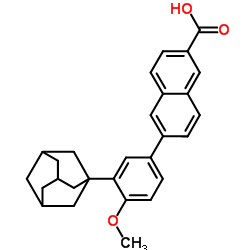Organic Active Ingredients in Cosmetics

Cosmetic skin care products manufacture is a highly increasing field. The need for nontoxic, non-irritating, naturally derived creams and lotions has resulted in a rapid increase of available products worldwide. Most of these products are based on a thick, organic oil base with the addition of active ingredients, in various concentrations. Recent research has led to the discovery of various active ingredients and their specific functionalities. Plant derivatives and extracts are commonly ‘friendly’ to human organisms and the skin in particular, although exceptions exist and have been widely reported. The common process includes a variation of extraction of a natural compound from a plant part in a wisely and carefully used solvent. It should be kept in mind that many organic extracts are soluble in organic solvents which are in general harmful to the environment, mainly due to Volatile Organic Compounds [VOC] emissions. Whenever possible, water or any other environmentally friendly solvent should be used for components extraction.
More than just a barrier for mechanical protection, epidermis is a metabolically active tissue in constant dynamic balance and periodically undergoes complete renewal cycles. This ability makes the epidermis a decisive component for maintaining body homeostasis. Over the years, however, epidermal primary functions may gradually falter. Physiological wear from skin aging is a consequence of damage that accumulates throughout the organism’s life and is caused both by intrinsic factors (physiological components and genetic predisposition)and extrinsic factors (external insults, particularly from solarradiation). Molecular, cell-related, and morphological changes in aged epidermis not only compromise its protective role, but also contribute to the appearance of skin symptoms, including excessive dryness and pruritus, as well as increased pre-disposition to formation or deepening wrinkles, dys pigmentation, fragility and difficulty to, alteration in skin permeability to drugs, impaired ability to sense and respond to mechanical stimuli, skin irritation, and tumor incidence.
Generally, four different categories of skin functionalities can be identified; defense against mechanical and chemical threats, organism water/ ion balance, immunological defense and toxin elimination, and solar radiation protection and antioxidant activity.
Some of the most interesting active ingredients for the cosmetics industry are:
| Achillea millefolium extract |
- Increase synthesis of mRNA - Increase synthesis of proteins for different receptors - Increases thickness of epidermis - Increases appearance of pores |
||
|
Adapalene |
- regulation of epidermal cell proliferation and differentiation |
||
| Jasmonic acid derivative (LR2412) |
- induces hyperplasia in epidermis reconstructed in vitro - increases thickness of epidermis |
||
| Oxysterols |
- increases mRNA and protein for involucrin, loricrin and profilaggrin - treatment of hyper proliferative epidermis with oxysterols restored epidermal homeostasis |
||
| Botryococcus braunii microalgae extract |
- increased significantly the AQP3 gene expression in human keratinocyte cultures - inhibited hormone-sensitive lipase activity in adipocytes - increased the biosynthesis of collagen I and III in fibroblasts - increased expression of filaggrin and involucrin - exhibited a powerful antioxidant activity |
||
| Coffea arabica L. seed oil |
- TGF-βand GM-CSF increase in cell culture - recovery of neurological response - increased AQP3 gene expression in culture and ex vivo skin |
||
| Kanglaite (mixture of extractions of coix seed) |
- increased AQP3 gene expression - inhibited the reduction of the expression of this protein caused by keratinocyte exposure to UVB radiation |
||
|
Amaranth oil |
- adjutant in skin hydration |
||
|
Apricot oil |
- adjutant in skin hydration |
||
|
Argan oil |
- adjutant in skin hydration |
||
|
candelilla wax |
- adjutant in skin hydration |
||
| Coffea arabica L. seed oil |
- increases TGF-βand GM-CSF in keratinocyte cell culture - immune response recovery |
||
| Korean red ginseng extract |
- control LPS-stimulated inflammatory response |
||
| Leontopodium alpinum extract |
- anti-inflammatory and immunomodulating activities |
||
| Natural extract of arnica flowers (Arnica montana) |
- stimulated gene expression of defensins (hBD2 and/or hBD3) in a normal human keratinocyte culture model |
||
| Natural extract of black elder (Sambucus nigra) bark |
- stimulated gene expression of defensins (hBD2 and/or hBD3) in a normal human keratinocyte culture model |
||
| β-Carotene |
- inhibited UVA-induced gene modulation in a HaCaT human keratinocyte lineage - In non-irradiated cells, the gene regulation suggests that β-carotene significantly reduced signs of stress and degradation of the extracellular matrix |
||
| Calluna vulgaris extract |
- protection to the skin - reduces TNF-αand IL-6 cytokines and pirimidin dimers |
||
| Green tea extract |
- anti-inflammatory action - anti-oxidant action - DNA repairing - Inhibits psoralen - Inhibits p53 protein accumulation - Decreases number of number of apoptotic keratinocytes on the skin |
||
